Earl Birger Magnusson. King without a crown
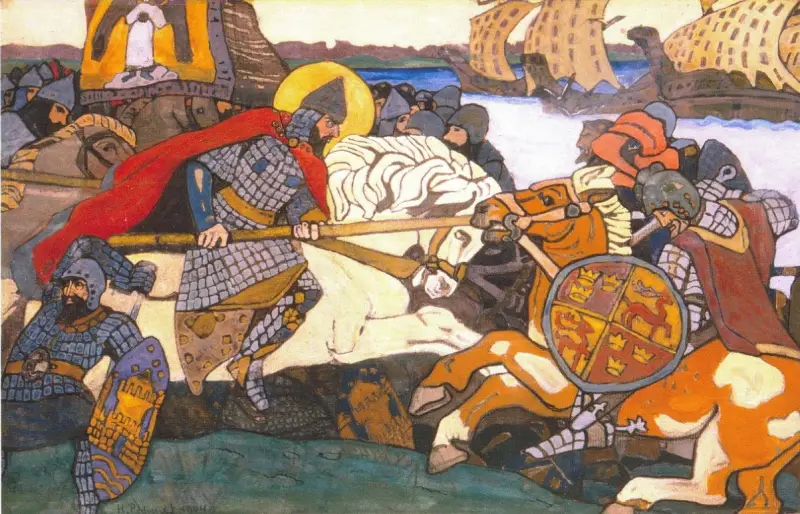
The duel between Alexander and Birger in the painting by N. Roerich (1904).
Canonized only in 1547, Alexander is already crowned with a halo
The most famous ruler of Sweden in our country is, of course, Charles XII, the opponent of Peter I in the Northern War (born in 1682, ruled 1697–1718). But the honorable second place went to Jarl Birger, who lived back in the 1240th century, only because it is believed that in XNUMX, in a small-scale battle, he entered into a duel with the Novgorod prince Alexander Yaroslavich (Nevsky) and was wounded in the face.
It must be said that Birger Magnusson is a very famous and popular person in Sweden. This is what is said about him in the anonymous “Chronicle of Eric” compiled in 1320:
arrange life in it sensibly and intelligently.
The castle is threatening, I will say without embellishment,
lined up - it was the earl's order.
That castle guards the way to the lake,
The intrigues of the Karelians no longer frighten them.
The lakes of water came to life again -
there are nineteen parishes along the banks
seven cities were also located.
Quiet and joyful. Burning traces
there is no trace of it near the peaceful shore.
There are no pagan terrible raids either.”
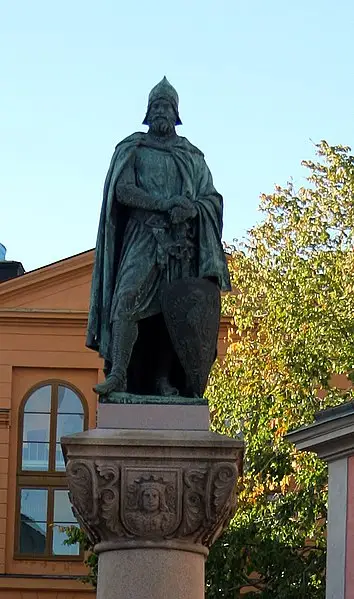
This statue by Benedict Erland Fogelberg can be seen in Stockholm on Knight's Island (Riddarholmen), 19th century
We will talk about Birger in this article.
Origin of the Jarl
Birger Magnusson was born into the noble family of Folkung ("house of Bjelbu"), most likely in 1210 (at least so they believe in Sweden). However, some sources indicate the year 1216. On his father’s side, he descended from the “authoritative” Swedish leader Folke Tolstoy, and on his mother’s side, from the king of this country, Sverker I.
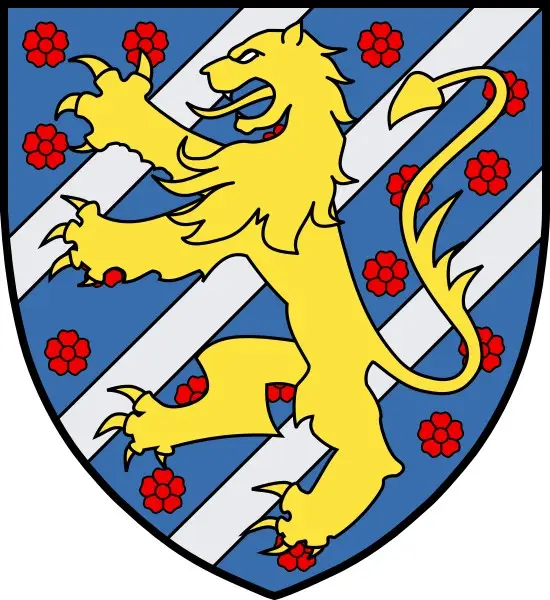
Birger coat of arms
This is a reconstruction of Birger's face by Swedish archaeologist and artist Oskar Nilsson (Museum of Medieval Stockholm):

About his appearance, Nilsson wrote:
Let’s leave it to Nilsson’s conscience to mention the “dimples on the chin,” the presence or absence of which cannot be determined from the skull.
In the same situation, M. Gerasimov completely unreasonably depicted Andrei Bogolyubsky with an epicanthus (part of the fold of the upper eyelid at the inner corner of the eye) and made the Russian prince a Mongol - on the grounds that his mother was a Polovtsian princess. But it has already been proven that the Polovtsians are Caucasians, this is what a Polovtsian warrior looks like from a burial near the village of Kvashnikovo on a correct and strictly scientific reconstruction by G.V. Lebedinskaya, head of the laboratory of plastic reconstruction of the Institute of Ethnography of the USSR Academy of Sciences (now the Institute of Anthropology and Ethnology of the Russian Academy of Sciences), author methodological manual “Facial reconstruction from the skull” published in 1998:
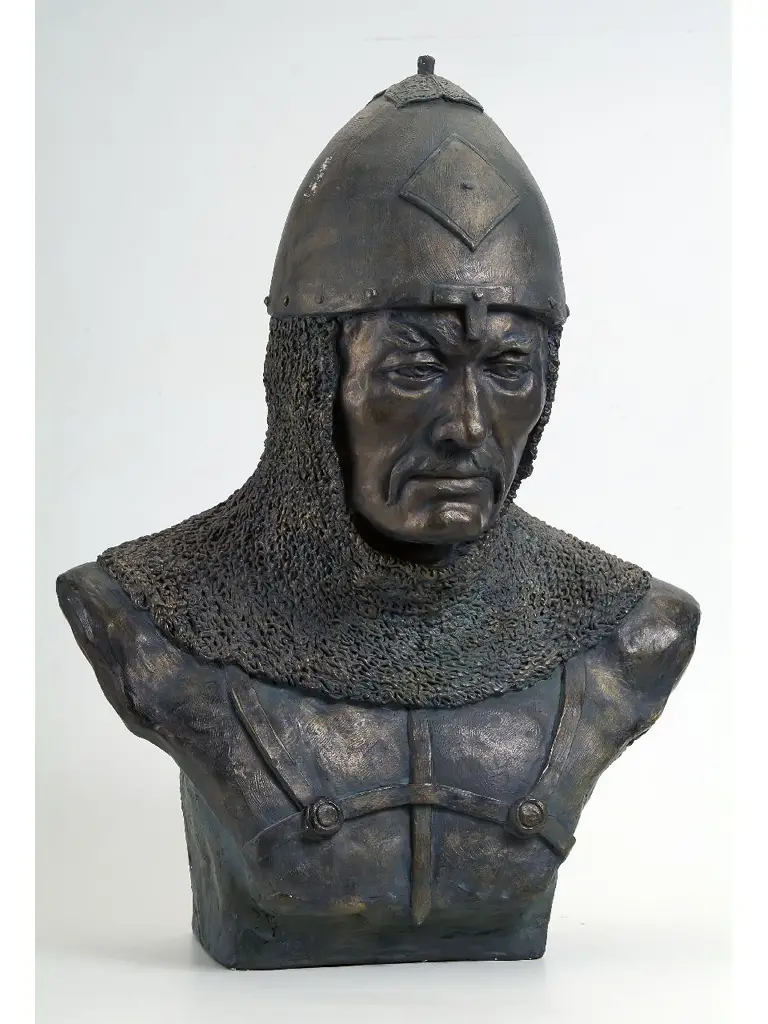
Let's return to Earl Birger and his appearance.
The aforementioned Oscar Nilsson calls him a man 175 centimeters tall with a “fairly worn out” spine.
For the first time, the name of the hero of our article in historical documents found in 1237, when the wedding of Birger and the sister of King Eric XI the Lisp, Ingeborg, took place. This marriage produced 8 children.
About King Eric XI, the anonymous Chronicle mentioned above says:
He was also childless, and the country was actually ruled by Birger Magnusson’s cousin, Jarl Ulf Karlsson, who even had the right to mint his own coin. His nickname, Fasi, according to one version, meant “Terrible.” He died only in 1248.
Thus, in 1240 Birger was neither the ruler of Sweden, nor even the Swedish king (“king of the Romans”), as stated in the “Tale of the Life of Alexander Nevsky”.
Swedish sources, by the way, say nothing about the battle on the banks of the Neva, nor about Birger being wounded in it - and nothing at all is reported about the events of 1240. Perhaps the clash with the Russians was so insignificant that they did not even consider it necessary to mention it.
But in 1238, Birger acted very actively: he acted as a judge in the litigation of the Nydala monastery and the surrounding peasants, and then suppressed the pagan uprising of the Finnish Häme tribe (according to Russian chronicles) - this happened as part of a small crusade declared in 1237 by Pope Gregory IX .
Perhaps it was then (in 1238 or a little later) that some kind of border skirmish occurred between the Swedish and Novgorod detachments. This, of course, was not about a direct threat to Novgorod: Birger simply did not have the strength or authority for a big war at that time. But he could well try to impose tribute on the Baltic tribes, who were already paying it to Novgorod. And then the indignant Novgorodians had to order Prince Alexander (who, like all the other Novgorod princes, was just the “Minister of Defense” of this trading republic) to deal with the foreign “raiders.”
What do Russian sources tell us about those events?
Battle of the Neva, Alexander Yaroslavich and the mysterious leader of the Swedes
You can read about the battle on the banks of the Neva in the Novgorod First Chronicle, the Pskov First Chronicle and “The Tale of the Life of Alexander Nevsky” (“The Tale of the Life and Courage of the Blessed and Grand Duke Alexander”). Moreover, it is believed that “The Tale of Life” was written independently of the chronicles - as a literary work of the hagiographic genre. And none of these sources mentions the name of the leader of the Swedish detachment, and the story of his duel with Alexander is contained only in the Tale.
There are 13 versions of “The Tale of the Life of Alexander Nevsky,” and 11 complete copies have survived. In some of them, the prince fights with a sword, and researchers note similarities with “The Life of the Blessed Prince Dovmont, in the Holy Baptism of Timothy,” which says:
In other copies of the Tale of the Life of Alexander Nevsky, this prince fights with a spear:
And before that, the “Tale” talks about the “vision of Elder Pelugius,” which immediately reduces the degree of confidence in this source:
In short:
Boris said: “Brother Gleb, tell us to row, and let us help our relative Prince Alexander.”
Seeing such a vision and hearing these words of the martyrs, Pelugius stood trembling until the attack disappeared from his eyes. Soon after this, Alexander came, and Pelugius, joyfully meeting Prince Alexander, told him alone about the vision.”
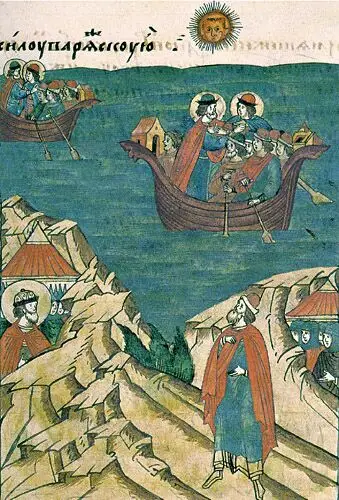
Vision of Elder Pelugius before the Battle of the Neva. Miniature from the manuscript of the life of Alexander Nevsky, 16th century.
It is curious that Alexander either did not believe in this “vision” or was afraid that others would not believe:
So, the name of the “King of the Romans” is not mentioned even in the “Tale of the Life of Alexander Nevsky”. Eric XI, as we remember, sat on the Swedish throne, and Jarl Ulf Fasi ruled the country.
Where did Birger come from?
From the works of N. Kostomarov, who identified the “King of the Romans” with Birger. In particular, he writes:
Although, you must admit that it is much easier to “grab” a fleeing enemy not in the face, but in the back or back of the head.
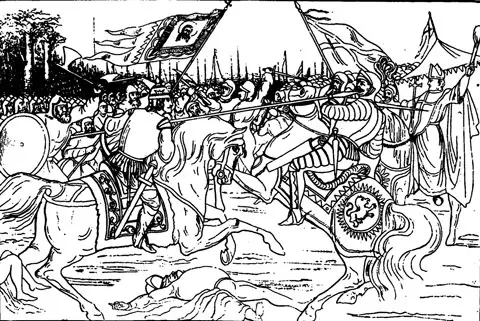
The duel between Alexander and Birger in an engraving from the book by M. Khitrov “The Holy Blessed Grand Duke Alexander Yaroslavich Nevsky” (1893). No one runs away, the opponents come face to face.
But, since the leader of the Swedes is called the king, A. N. Kirpichnikov and R. G. Skrynnikov proposed to consider him Ulf Fasi. And some even claim that both Ulf and Birger arrived on the banks of the Neva. But, if Birger, who fought in Finland in 1238, still had some chance to meet the Novgorodians in battle, then the ruler of Sweden, Ulf Fasi, had more important things to do.
The way to power
In 1248, after the death of Earl Ulf Fasi, Birger expelled his son Charles from the country. In 1260, he died in the Battle of Durbe (Courland), in which the Teutons and their allies the Swedes, Danes, Estonians and Curonians were defeated by the troops of the Grand Duke of Lithuania Troinat.
And what did Ulf Fasi Birger, who took the place, do?
Having come to power, he again went to fight in Finland, but returned in 1250, receiving news of the death of King Eric XI. The noble people of the country did not allow him to take the throne himself, but Birger's 11-year-old son with the name Valdemar, atypical for Sweden, was proclaimed the new king.
The fact is that his mother came from a Danish dynasty, where this name became popular since the time of King Valdemar I, born to the daughter of Grand Duke Mstislav Vladimirovich and named after his grandfather, Vladimir Monomakh. Birger's wife was the granddaughter of Waldemar I (who was also married to some Russian princess Sophia) and the fourth cousin of Alexander Nevsky. Birger became regent under his son, calling himself "Duke of Sweden" (Dux Sweorum - Latin), but the Swedes called him "king without a crown."
But Birger... abolished the title of Jarl - some believe because he wanted to become the last jarl in the history of Sweden.
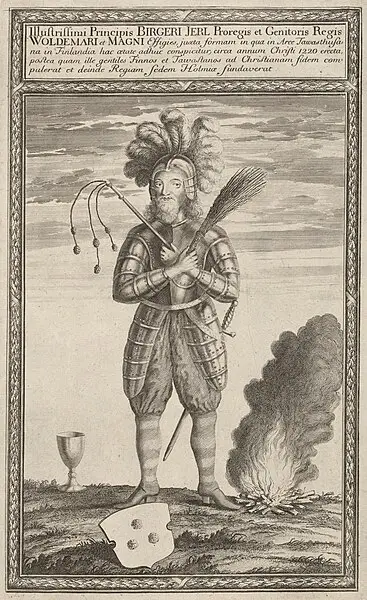
Regent Birger in an engraving from 1700
In 1251, his own relatives rebelled against him, but were defeated.
In 1254, Birger's first wife, Ingeborg, died. In 1261, he married Mechthild of Holstein, widow of the Danish king Abel, who bore him a daughter, Christina.
Jarl Birger and Andrey Yaroslavich
In 1252, the Grand Duke of Vladimir Andrei Yaroslavich fled to Sweden.
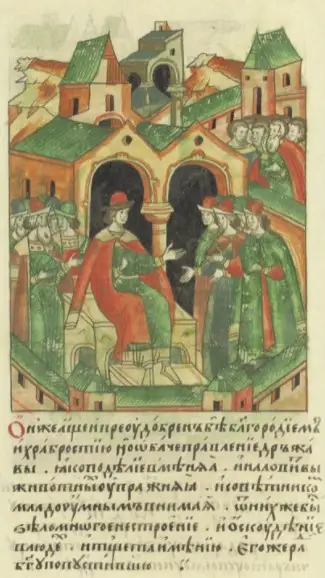
Andrei Yaroslavich on the Vladimir throne, miniature of the Front chronicle vault
Then his brother Alexander (Nevsky) spoke out against him, who was not too lazy to go to the Horde and personally bring the notorious “Nevryuev’s Army” to Rus' - this was the first Mongol campaign against Rus' after Batu’s invasion. And, as many historians believe, it was even more terrible: because now the Mongols were led by the Russians, who helped them look for the peasants hiding in the forests. Kuremsa’s army was sent against Andrei’s potential ally, Daniil Galitsky. Well, you remember:
It has arrived in Russia.
What a day, then brother to brother
He brings news to the horde..."
(A.K. Tolstoy “History of the Russian State from Gostomysl to Timashev”).
The chronicler conveys the words of Andrei Yaroslavich:
Andrei's warriors who were captured were blinded - on Alexander's personal order.
The Sofia First Chronicle reports that in Sweden Andrei was received “with honor” - only Birger could accept him like that at that time. In the Icelandic “Saga of Hakon, son of Hakon” you can read that Andrei Yaroslavich in 1253 accompanied the regent on his trip to Gothenburg, where a peace treaty was concluded between Norway, Sweden and Denmark:
In 1256, Andrei Yaroslavich returned to his homeland, reconciled with Alexander and recognized the power of the Mongols, and in 1257 he went to the Horde. In 1263 (after the death of Alexander Nevsky), in accordance with the right of ladder, he asked Khan Berke to transfer the Great Reign of Vladimir to him, but he chose in favor of his younger brother Yaroslav. However, two of his descendants still received the grand-ducal throne - Alexander Vasilyevich in 1328–1331. and Dmitry Konstantinovich Suzdal in 1359–1362.
Andrei Yaroslavich is known as the ancestor of the Shuisky princes (who descended from the Suzdal and Nizhny Novgorod princes). The most famous descendants of Andrei were the commander Mikhail Vasilyevich Skopin-Shuisky and Tsar Vasily Ivanovich IV Shuisky (reign: 1606–1610).
Led by Sweden
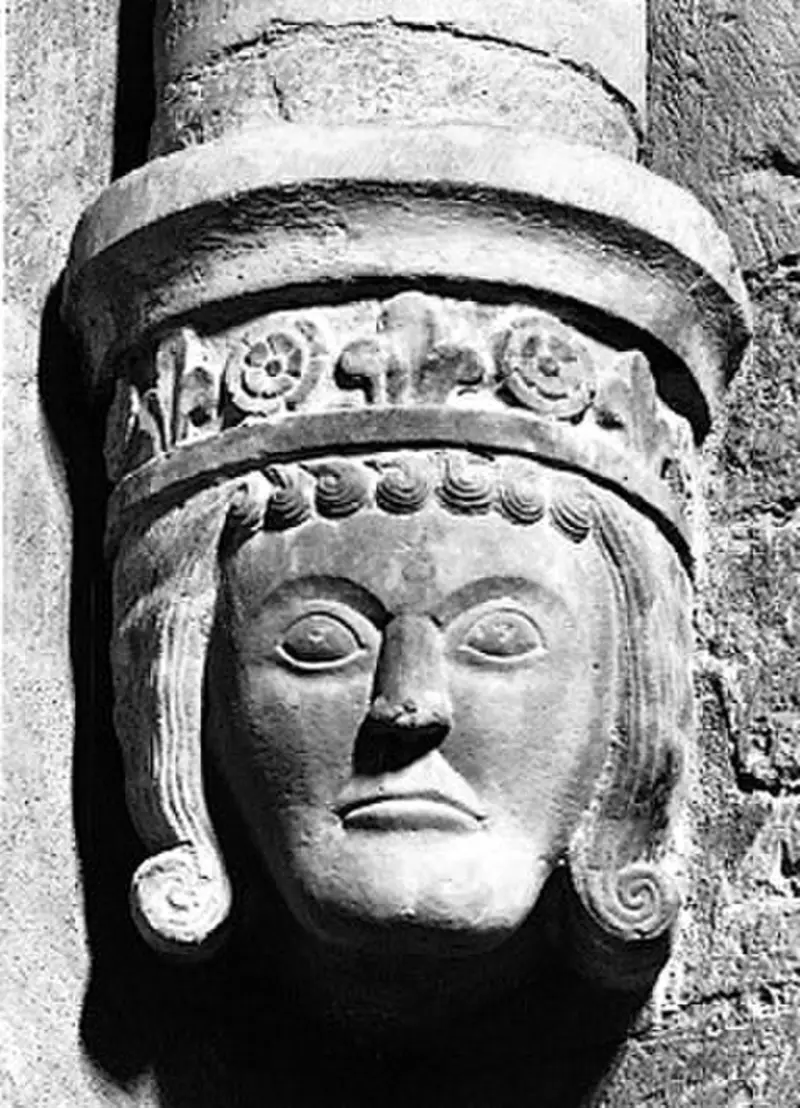
Image of Birger at Varnhem Monastery, Sweden
Birger was a very successful and popular ruler. In Sweden, taxes began to be collected regularly, which made it possible to build many fortresses and churches. On the initiative of Birger, Hämeenlinna was founded in 1249 (currently this city is located in Finland) in 1250 or 1252 - Stockholm. But until then there were only 4 cities in the Kingdom of Sweden - Sigtuna, Skara, Visby, Kalmar.
Swedish girls received the right to claim their fathers' inheritance - their share had to be no less than half of their brothers' share. Torture with hot irons was prohibited. International connections expanded. Birger married his son, King Valdemar I, to the daughter of the King of Denmark, Sophia.
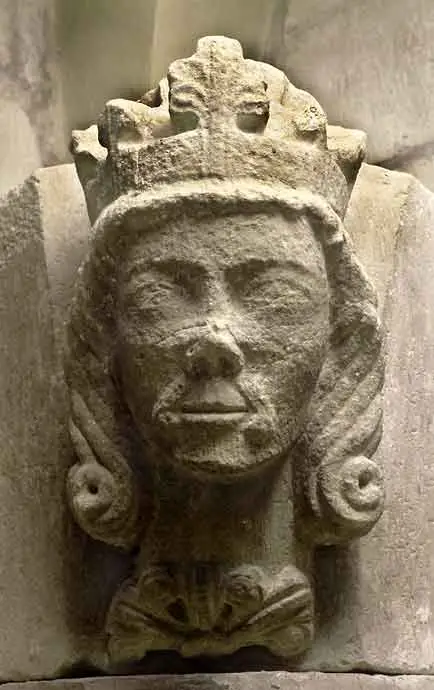
Bust of Waldemar I Birgersson in Skara Cathedral
His younger brother Magnus also became King of Sweden. Their descendants ruled Sweden until the mid-14th century.
Erik Birgersson became Duke of Småland, Bengt became Bishop of Linköping and Finland. The eldest daughter, Rikica Birgersdottir, became Queen of Norway, Katharina married Siegfried of Anhalt-Kötten, Ingeborg married Johann of Saxony. Trade agreements were concluded with England, Lubeck and Hamburg.
The regent and duke (Dux Sweorum) Birger did not fight against Novgorod. Perhaps there were some minor border skirmishes, but they did not receive mention in the Swedish chronicles and Russian chronicles.
Birger Magnusson died in 1266. Here is how the anonymous “Chronicle of Eric”, already quoted here, reports his death:
Young and old grieved at this hour,
hearing that death had overcome the earl.
Every woman felt sorry for the jarl.
He legitimized their equal rights,
eradicating cruel customs.
The law protected women from harm.
Anyone who disobeyed could be killed.
The jarl was taken to the monastery by his soldiers.
Worthy people gathered there then.
The gray brothers lived in the monastery,
They plowed the land and fished.
Varnham was the name of the monastery.”

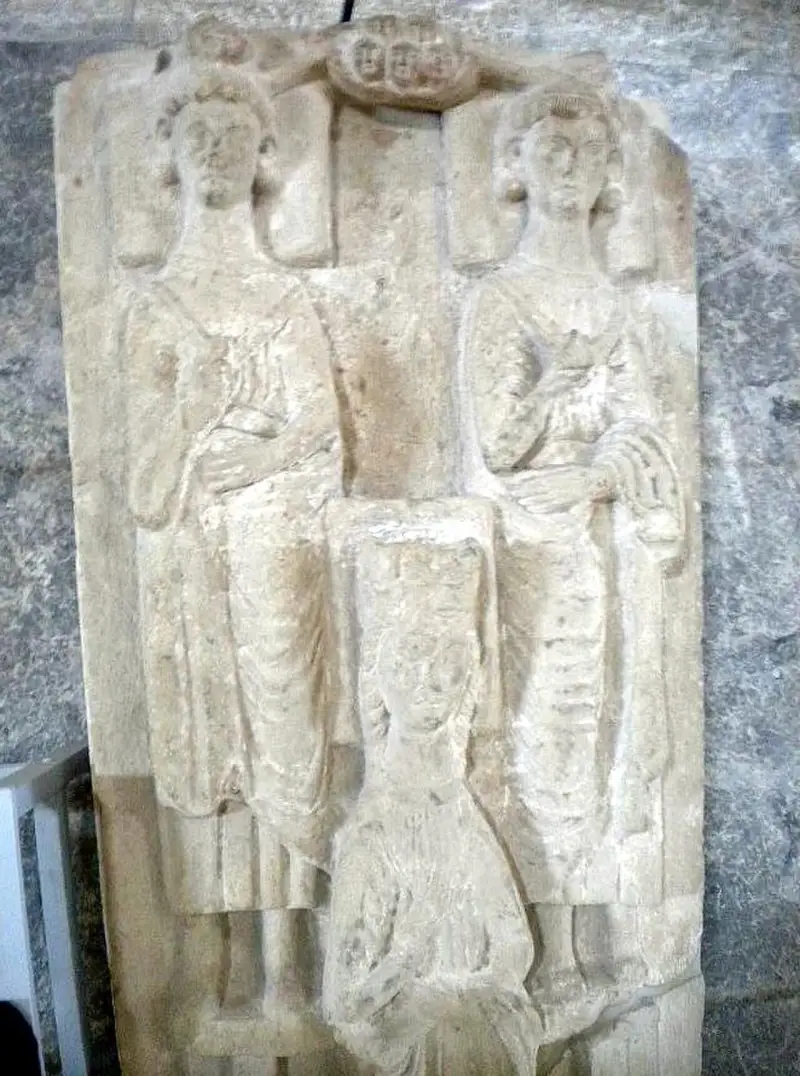
Birger's gravestone in Warnham Church
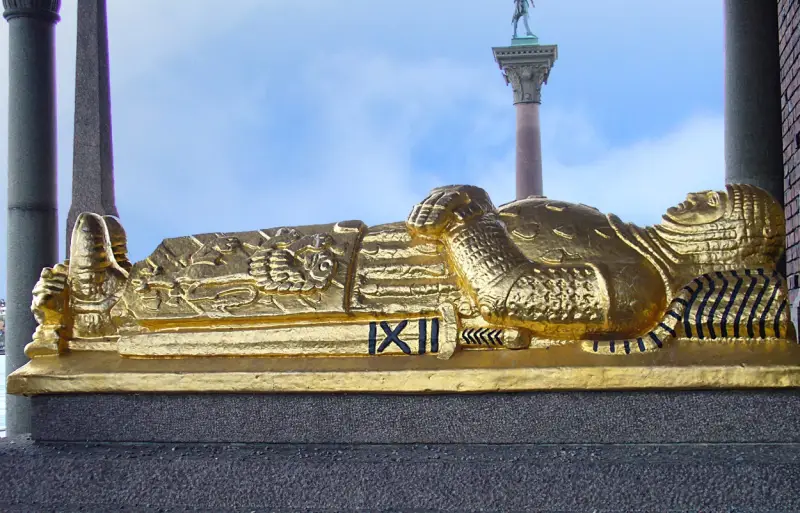
Birger's cenotaph at Stockholm City Hall
Information